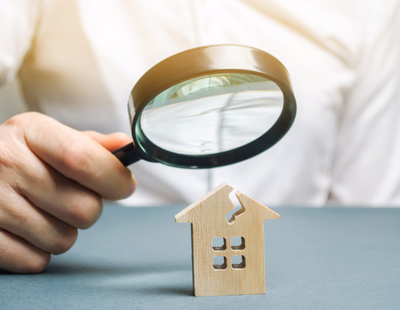The Regulator of Social Housing has warned landlords in that sector to take immediate action over damp and mould.
And the regulator has set out ‘10 key tests’ for social landlords to use when assessing whether they are taking the problem sufficiently seriously.
This follows a report suggesting that 120,000 to 160,000 social homes in England alone had “notable" issues with damp and mould, with 40,000 to 80,000 having serious issues.
Richard Blakeway, Housing Ombudsman, says: “The inquest into the death of Awaab Ishak has focused the minds of the sector. But we are continually finding in our casework that landlords have not responded to this issue with sufficient urgency.
“…Landlords need to have a sustained focus on culture and behaviours to ensure issues are not dismissed. The human impact and consequence of the creeping normalisation of poor culture was highlighted by the death of Awaab Ishak.
“It is disappointing when we conducted our review how few landlords had acted to implement a dedicated damp and mould policy, despite there being a clear and driving need to have a bespoke response for these reports given the shortcomings identified in our casework.
“…I would encourage governing bodies to consider our ten ‘key tests’ when reviewing plans, and for landlords where this is not happening, for them to create an action plan to support a proactive response.
“I know this is now a priority for many landlords, but I would urge senior leaders to go faster and further in their efforts to do what is right by their residents.”
The 10 key tests are:
1. Find your silence – who’s not using your complaints system and why? Some landlords see high complaints as a bad thing, but high complaints about damp and mould can be a sign that you are open and transparent, and people feel they can complaint
2. Proactive communications strategy – Damp and mould cases are out there, and you need to engage with that. But our call for evidence also highlighted that landlords are often doing quite a lot in this space and their residents have no idea. Don’t patronise, don’t be obscure and make sure you use every day terms – the advice needs to be helpful and understandable
3. Treat residents fairly – It isn’t their fault they are in a home unsuitable for living or currently in a property that is marked for regeneration/demolition
4. Improve record keeping – How can you adopt an intelligence-based front foot if you have no data on what you’re dealing with? How can you ensure that the left hand knows what the right hand is doing if nothing is recorded? We’ll soon be releasing a Spotlight report on this issue for you to engage with
5. Know your residents – Occupancy factors may include overcrowding and the availability and use of heating and ventilation systems. They also include individual circumstances such as disability, financial hardship, and health conditions
6. Check net zero plans – Electric heating costs more than gas. If you’re net zero strategy is pushing people into hardship, need to make sure you’re making mitigations
7. Know your homes – Structural factors include property age, design, and modifications. For example, certain types of properties such as converted street properties, buildings of concrete construction or traditional solid type construction are more susceptible to damp and mould than others
8. Dedicated damp and mould strategy – Create one by looking wider than the individual cases. Use your void periods and mutual exchanges too
9. Empower staff – if they’re in a property for something else, help them clock the signs. We encourage landlords to consider the Chartered Institute of Housing’s Professional Standards if they have not already done so
10. Use the complaints system to learn – Be robust in using the complaints process until such time as proceedings are filed.
Want to comment on this story? Our focus is on providing a platform for you to share your insights and views and we welcome contributions.
If any post is considered to victimise, harass, degrade or intimidate an individual or group of individuals, then the post may be deleted and the individual immediately banned from posting in future.
Please help us by reporting comments you consider to be unduly offensive so we can review and take action if necessary. Thank you.


















.png)






Join the conversation
Jump to latest comment and add your reply
Why are the occupants not fined, given a Penalty or Evicted for misuse of the property,
I know from personal experience its very often down to Tenants lifestyle, misuse and neglect of their duty.
While they keep abusing the property and living in their own squalor then running to ITV anti-landlord programmes, it’s not going to improve anytime soon.
Yet another article that does not acknowledge mould is often (not always) down to lifestyle. The person quoted does not, and the person writing this article does not.
This just adds to the propaganda that mould is always (rather than sometimes) down to the landlord.
The headline should read…. Tens of thousands of tenants don’t open a window. This is the new method that we will have legal action taken against us, I can see this becoming a cash 💰 cow 🐄.
Surely number 1 should be educate your residents? Then if there is a problem, first rule out tenant behaviour. Was the property damp before they moved in?
Don't forget that the little lad that died lived in SOCIAL housing and his parents were too lazy to wipe the mould away with a little bleach and water.
In Norwich a lot of council flats were built in the 60s and are of pre cast concrete construction, now past their sell by date and need replacing, in the main this is where the problem is .
They can’t afford to heat their homes so that’s are fault !!
The tenant should have to prove his case in court, possibly by means of a survey carried out by an appropriately qualified person.
"1. Find your silence – who’s not using your complaints system and why? Some landlords see high complaints as a bad thing, but high complaints about damp and mould can be a sign that you are open and transparent, and people feel they can complaint"
What a load of BS. Yes landlords don't want complaints. I have them with my African tenants. Lots of them. Including growing mould, council intervention and a no-win no fee claim.
Never mind finding MY silence. They can find their own silence. They can find the ******* window handle and open them which they didn't. They are caught drying clothes in the house. Why is it private houses don't have mould? But when they get rented out they do? Again too many tenant rights even at present.
Please login to comment